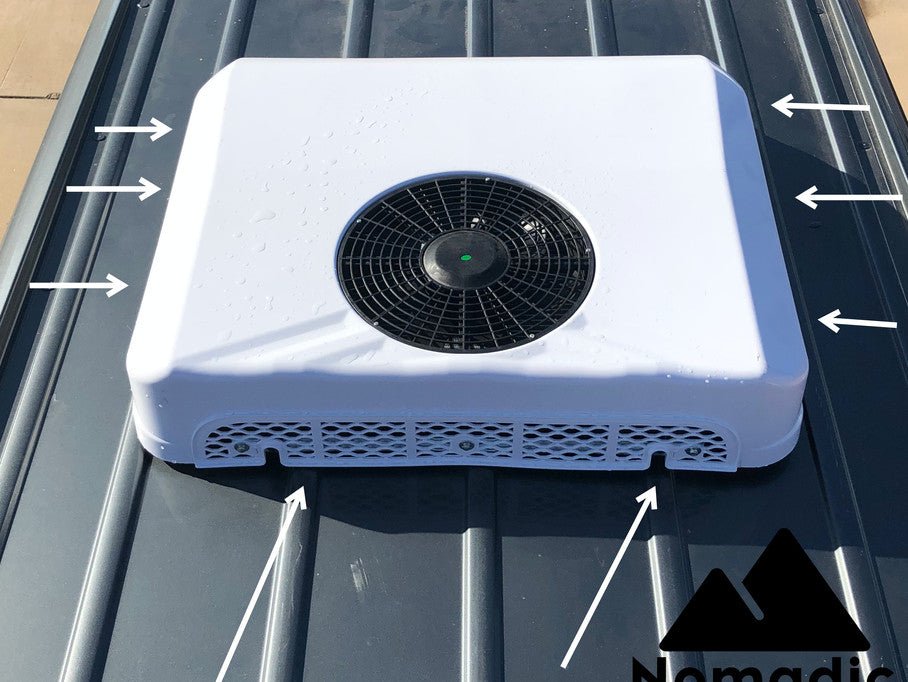Does my air conditioner need more refrigerant?
Most cooling problems are related to poor maintenance, improper usage, or improper installation.
Evaluating the performance of Nomadic Cooling Air Conditioner is relatively simple and only requires some basic tools.
NOTE: Cooling performance tests can only be effectively done at ambient temperatures above 75° F / 24° C.
Visual inspect the unit.
-
Check all connections.
-
Check for any leakage from the supply air to the return air. Any loss in capacity to the RV and must be sealed.
-
Check the return air filter(s) and the evaporator and condenser coils are clean and undamaged.
-
Clean and straighten the fins on both coils and clean the filter(s) as necessary before starting a performance test.
Conduct a Cooling Performance Test
1. Measure the evaporator temperature difference: Open all discharge/ supply vents fully. Place air conditioner in COOL A/C on mode. Allow the air conditioner to run for at least a half an hour.
This is necessary to fully cool the evaporator coil and saturate the unit with condensate water before beginning a temperature test.
2. Use a digital thermometer to measure the temperature of the air immediately entering the return air filter/grille of the air conditioner.
3. Measure and subtract the temperature of the air leaving the discharge/supply air louvers from the return air temperature.
A properly running A/C unit should have a temperature difference of approximately 16 to 28 degrees.
Slightly lower temperature differences are possible under extremely humid conditions. (The unit may have to run longer to remove moisture.) Greater temperature differences than 22 degrees are possible in hot, dry weather.
Restricted air flow over the evaporator may also cause greater than 28° temperature differences. In this case even though the temperature difference is greater the cooling capacity would be less.
Measure voltage to the air conditioner. Voltage should be checked at the unit where the rigs wiring connects to the air conditioner while the air conditioner is running. The correct operating range is between 12V or 24V DC +/- 2V DC respectively.
Measure compressor amperage. Allow the air conditioner to run in High Cool for at least a half an hour, longer if possible before checking compressor amperage. Measure and record the compressor amperage on the common wire to the compressor. If the compressor amperage is much HIGHER than it should be, look for some of these possible problems: Low or high voltage Dirty or damaged condenser coil fins Excessively high indoor/outdoor temperatures
- Overcharged
- Bad fan motor, no or slow fan speed.
If the compressor amperage is LOWER than it should be, look for some of these possible problems: Dirty filters
- Dirty evaporator coil
- Evaporator iced up
- No refrigerant charge
If the compressor amperage is HIGHER than it should be, look for some of these possible problems:
- House batteries Overcharged.
- Air Conditioner wiring improperly installed.



